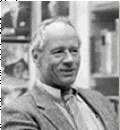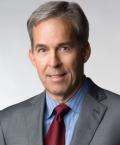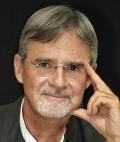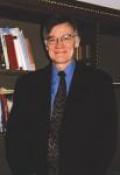Toward the end of World War I, American doctors fought an invisible enemy on the home front — a pandemic that would kill more people than any other outbreak of disease in human history.
Editor's Note: John Barry is the author of The Great Influenza: The Epic
As much as nine-tenths of the indigenous population of the Americas died in less than a generation from European pathogens.
In the summer of 1605, the French explorer Samuel de Champlain sailed along the coast of New England, looking for a likely spot to place a colony — a place more hospitable than the upper St. Lawrence River, which he had previously explored.
What human nature and the California gold rush tell us about crime in the inner city
Mary Mallon could do one thing very well, and all she wanted was to be left to it.
Longfellow notwithstanding, precious few of us leave footprints in the sands of time.
A disease that no one understood laid waste a major American city. Five thousand died in two months, and Memphis was never the same again.
In 1878, not long after Reconstruction ended, Memphis appeared likely to emerge from the ashes of Confederate defeat as one of the regal cities of the New South.
Americans have never been so healthy, thanks to advances in medical technology and research. Now we have to learn to deal with the staggering costs.
American medicine in a crucial era was at once surprisingly similar and shockingly different from what we know today. You could get aspirin at the drugstore, and anesthesia during surgery. But you could also buy opium over the counter, and the surgery would be more likely to be performed in your kitchen than in a hospital.
IN 1884 ALMOST three-quarters of America’s fifty million people lived on farms or in rural hamlets.
A young girl’s memories of life in a community haunted by
The mothers of my childhood friends paid special attention to me, and I never understood why.
The mysterious diseases that nearly wiped out the Indians of New England were the work of the Christian God — or so both Pilgrims and Indians believed.
In December of 1620, a group of English dissenters who “knew they were pilgrimes,” in the words of William Bradford, stepped ashore on the southern coast of Massachusetts at the site of the Wampanoag Indian village of Pawtuxet.
Of herbal medicine, a “doctor” named Samuel Thomson, and a sure cure for almost everything…
In the late 1820’s and 1830’s American physicians found themselves with a major rebellion on their hands.
It became apparent that this influenza was a first-rate killer.
In the last week of October, 1918, 2,700 Americans died “over there” in battle against the kaiser’s army. The same week 21,000 Americans died of influenza in the United States.
HOW A FARSIGHTED QUAKER MERCHANT AND FOUR GREAT DOCTORS BROUGHT FORTH, WITH MADDENING SLOWNESS, ONE OF THE FINEST MEDICAL CENTERS IN THE WORLD
In 1884, after he was offered an appointment to the medical faculty of the newly created Johns Hopkins University, Dr.
“ To spend and be spent for the Good of Mankind is what I chiefly aim at ”
One of Benjamin Rush’s biographers has compared him to quicksilver, the brilliant and elusive element mercury that changes so unpredictably yet so curiously reflects the images around it.
She was eighteen—pretty and sensitive, to judge by her photograph, taken in 1863. For many another girl, that age would have represented a new chapter in life in the form of a husband, children, a home of her own.
WHAT POLIOMYELITIS MEANT TO A POLITICAL CAREER
This article is an excerpt from a new book on Franklin Delano Roosevelt recently published by Doubleday & Company. It is being publicized as The F.D.R. Memoir “as written by Bernard Asbell. ” Mr.
It was the most devastating enemy surprise attack since Pearl Harbor—but what mysterious affliction were people dying of two days later?
The port of Bari, Italy, was crowded on the afternoon of December 2, 1943, when Captain Otto Heitmann returned to his ship, the John Bascom , with the two thousand dollars he had drawn from the U.S.
In the sumptuous history of transatlantic passenger travel it wasn’t all mahogany panelling and ten-course meals. Consider, for instance, war and seasickness
“THIS IS NOT A CANOE”
Patent medicines were usually neither patented nor medicinal, which is not to say they didn’t (and don’t) have any effect
If you can identify the period when gentlemen wore genuine ormolu lobs attached to their watches and the butcher threw in a slice of liver for the eat when he wrapped up the meat order, then you are close to establishing the date of the Golden Age of Secret R





